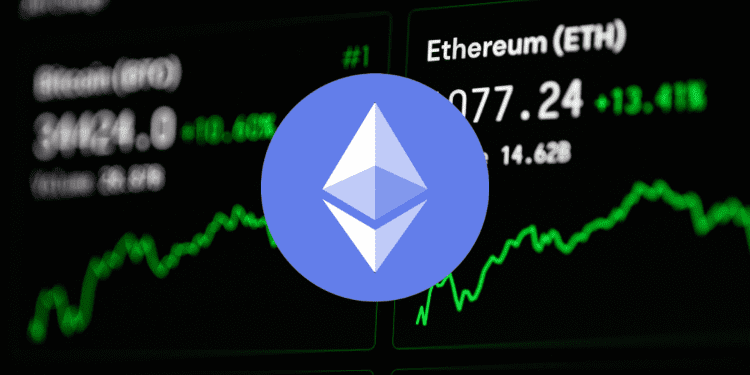- Ethereum price data casts doubt on the strength of ETH’s support at $3,000
- Analysts are not optimistic about the spot Ether ETF approval odds
- DApps activity and ETH derivatives offer a mixed prospect for price
The recent price drop has shaken confidence in Ethereum‘s $3K support level. Investors are growing concerned that Ethereum may fall below this key threshold.
Ethereum Price Action
Ethereum’s price plummeted by 21% between April 9 and April 14, hitting a 50-day low. Although it has recouped some of its losses, Ether continues to show signs of weakness following a failed attempt to breach the $3,200 resistance on April 14. Traders now question if the $3,000 support will hold for longer.
Spot ETH ETF Approval Outlook
Investors are cautiously optimistic about the potential approval of a spot Ether exchange-traded fund (ETF) in May. However, the mixed signals from on-chain and derivatives data suggest the possibility of further corrections before the US Securities and Exchange Commission (SEC) makes its decision.
Jan van Eck, CEO of VanEck investment firm, expressed doubt that the spot Ether ETFs would receive approval in May. He pointed to the SEC’s extended inactivity on a list of seven pending applications, including those from major firms like BlackRock, Fidelity, ARK 21Shares, and VanEck.
Eric Balchunas, Senior Bloomberg ETF analyst, noted that the absence of critical feedback from the regulator, even in face-to-face meetings, signals low approval odds, possibly around 35%. James Seyffart, another Bloomberg ETF analyst, added: “There’s no reason for the SEC to have done absolutely nothing for months when we knew this was coming.”
Comparing Ethereum to Competitors
It would be simplistic to attribute Ether’s recent downturn solely to the dim prospects of spot Ether ETF approval, especially since Bitcoin, the leading cryptocurrency, also fell 14% in the five days leading up to April 13. A more nuanced analysis would compare Ether’s performance against its direct competitors, particularly those involved with decentralized applications (DApps).
Since April 9, Ether’s 15% decline was more pronounced than the 8% drop in BNB and the 10% decrease in Tron. Conversely, Solana experienced a significantly steeper fall. However, these figures do not necessarily reflect the activity levels within each network’s DApps.
Assessing DApp Usage and Deposits
According to DefiLlama, Ethereum’s network TVL surged to its highest level in over 13 months on April 15, reaching 164 million ETH, marking a 148% increase on a month-to-month basis. In comparison, the BNB Chain’s TVL remained stable at 95 million BNB, while Tron’s deposits saw a 1% decline over the 30 days leading up to April 15.
The initial analysis suggests that the Ethereum network holds an advantage over its competitors, yet a more detailed examination is necessary as not all decentralized applications (DApps) require substantial deposit bases. It’s essential to assess network activity by examining transaction volumes and active user counts.
According to DappRadar, the Ethereum blockchain maintained its dominant position with a 7-day DApp volume of $457 billion, significantly outperforming its main rival the BNB Chain. Moreover, despite a modest 3% drop in active addresses (UAW) since April 9 used as a proxy for user engagement with DApps, Ethereum’s decline was less severe compared to the BNB Chain, which saw a 7% fall.
Analyzing Options Sentiment
Analyzing ETH options is vital to gauge whether professional traders have become more pessimistic about Ether’s prospects. Generally, a delta skew metric above 7 points to expectations of a price drop, while a skew below -7 indicates a bullish outlook.
On April 16, Ether’s options skew metric reached its highest level in over two months, breaching into bearish territory after hovering around the 7 mark for four days. This trend suggests that whales and market makers are demanding a premium for downside price protection on ETH.
Conclusion
On one hand, the anticipation of a decision on the spot Ether ETF in May bolsters Ether’s price, and the network’s on-chain activity, though stagnant, has performed better than that of its competitors.
However, the growing risk aversion among professional traders on April 16, as indicated by derivatives markets, advises against overlooking the potential for further price corrections of ETH below $2,900.














